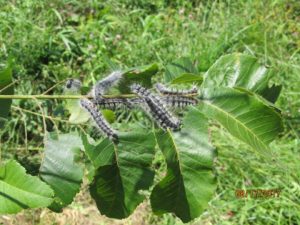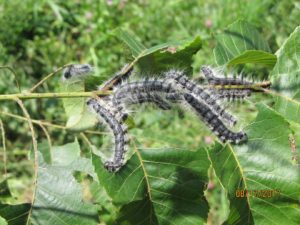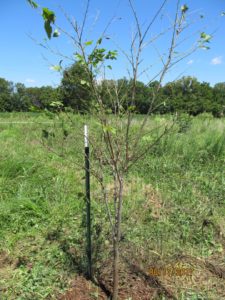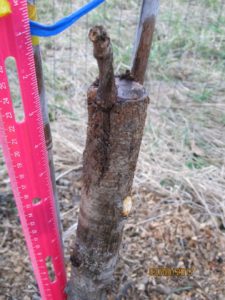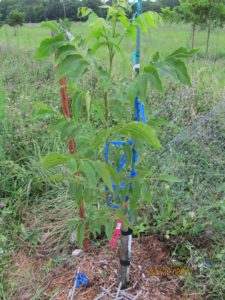Whoa! What are these vermin feeding on the pecan tree leaves?
After removing hundreds of caterpillars that were feeding on the tree leaves by crushing them between my fingers, here is what little foliage remained.
The caterpillars had almost completely defoliated the tree before I noticed it. So far this is the only affected tree that I have found. And, here is a closer look at what the caterpillars leave behind after feeding.
There are lots of birds that feed on the insects in the trees and leave their poop on the leaves and protective fence that encircles each tree. Sometimes they even land on the limbs and break some off. So, why did the birds not find and feed on the hundreds of caterpillars that were on this tree?
